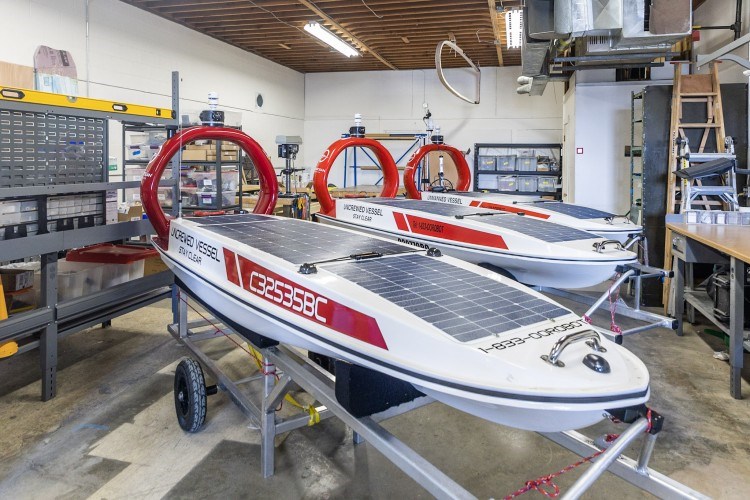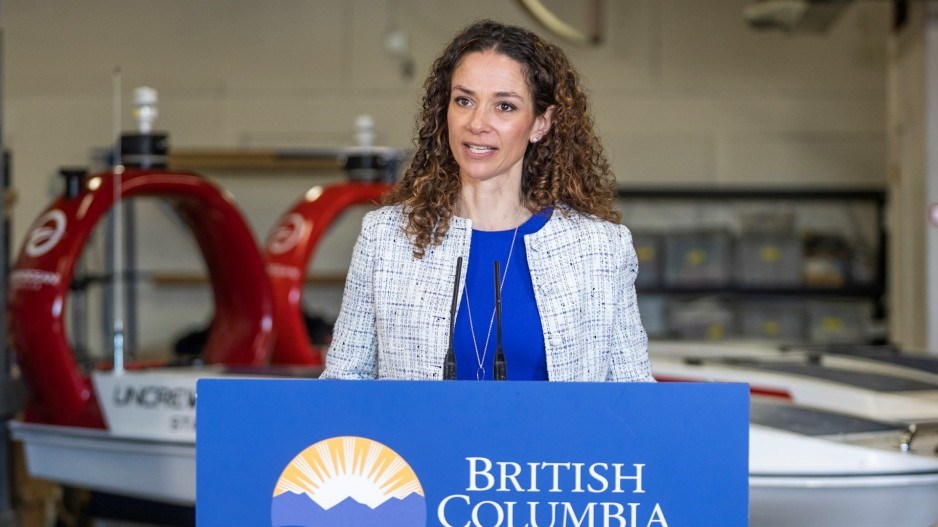Whether it is listening for noise in areas frequented by whales or watching for illegal fishing boats in marine protected areas, a solar-powered ocean drone developed by a Victoria husband and wife team is starting to prove itself a versatile ocean sentinel.
Open Ocean Robotics, based in Victoria, was among the recipients of funding from the provincial government’s Innovative Clean Energy (ICE) Fund Tuesday. The company is getting $1.75 million to help the company scale up its business.
“This really allows us to scale our technologies to continue commercializing it,” said Julie Angus, CEO and co-founder of the company, which developed solar-powered ocean robotic vessels -- also called uncrewed surface vehicles (USV) -- that can remain at sea for months at a time.
Julie Angus and her husband, Colin Angus, are probably better known as professional adventurers than as entrepreneurs.
Colin Angus’ expeditions have included tracing the Amazon River from source to sea, and travelling around the world by boat and bike. Julie Angus joined him on a portion of the latter adventure, when the couple rowed across the Atlantic Ocean in a wooden boat from Portugal to Costa Rica. The couple also cycled and rowed from Scotland to Syria in 2008. Their adventures have been the subject of a number of books and documentaries.
It was during their Atlantic crossing in a rowboat that the couple first came up with the idea of an autonomous ocean vessel. Nearly five years ago they founded the company, and now employ a team of 33 in Victoria that has built and operates five of the solar-powered robotic vessels.
“One of our big challenges with our oceans is that it’s extremely difficult to monitor,” Julie Angus told BIV News.
To address this problem, the couple developed a small, 12-foot vessel that is solar powered and which can stay at sea for long periods of time without needing to be recharged.
“The longest deployment we’ve done to date has been 25 days continuously and that was monitoring a marine protected area in Hawaiian waters,” Angus said. “But if we have missions that are longer, we can deploy for a longer period of time.”
The company doesn’t make the maritime drones for sale. Rather, they are provided as a service.
“We’re actually a data company,” Angus said. “It’s the data that we sell.”

The drones are equipped with a camera, and can be outfitted with a variety of sensors that can monitor weather conditions, temperatures, currents, and do ocean floor mapping. While the robotic vessels can be programed to follow specific courses, they are also monitored around the clock and can be piloted remotely.
Angus said a lot of proprietary technology went into the drones’ design. They were designed to be able to function in heavy seas and right themselves in the event they capsize, for example.
“We can go out in really high sea states and we can endure those conditions, whereas a lot of other boats or robots wouldn’t have been able to endure that,” Angus said. “All of our electronics, all of our software, all of our code is also all proprietary.
“We can put on a thermal camera for nighttime operations,” Angus added. “We can tow an acoustic array, which allows us to listen for noises in the ocean. So for example, if you wanted to do marine mammal monitoring, you can listen for marine mammal vocalizations.
“Areas that we are most active is in environmental monitoring and maritime domain awareness. We’ve been involved in illegal fishing enforcement. That was in the States. We did a project in a Hawaiian sanctuary.”
According to company case studies, the marine drones could also be used in the detection of oil spills, monitoring vessel traffic in the Arctic, and for anti-submarine warfare.




